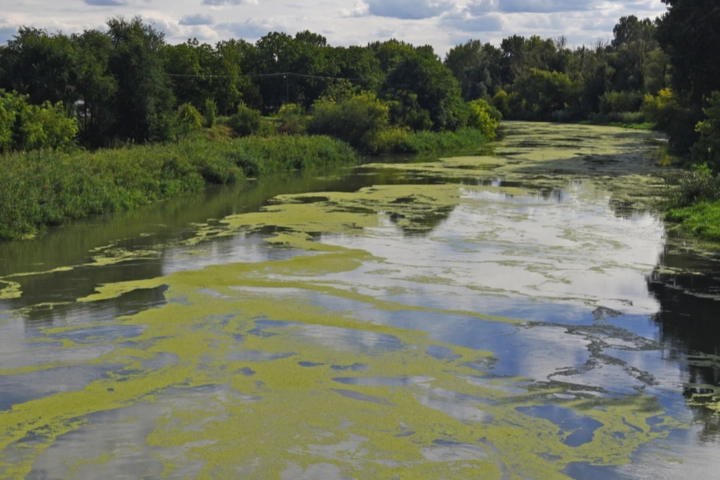
What Are Algae Blooms?
Algae blooms develop when excess nutrients from the fertilizer used on farms, lawns, and golf courses, as well as wastewater and stormwater runoff get into aquatic ecosystems. When the runoff mixes with Florida’s warm, nutrient-rich waters and abundant sunlight, algae can grow quickly and densely. The algae can change the color of the water and form unattractive clumps that attach to the ground, other plants, or float on the water’s surface. While the blooms are natural, too much algae can deplete oxygen levels, causing hypoxia (low oxygen) or anoxia (no oxygen). Organisms such as fish that rely on oxygen to survive can become stressed and die.Controlling Algae Blooms
The most effective way to control algae blooms is to lessen the number of nutrients in the water. If nutrient reduction is not an option, other favorable alternatives include:-
Chemical treatments
copper sulfate and chelated copper compounds are common chemical treatments used to control algae by blocking the light needed for growth. -
Biological treatments
fish stocking is the primary biological treatment used today to control submersed and floating algae. Grass carp are one of the few species of fish that eat plants and can manage aquatic weeds and attached submersed algae such as Nitella and Chara. -
Physical treatments
both aeration and airlifts will not kill or remove the algae, but instead, stir and oxygenate the water to change the unhealthy conditions. -
Mechanical treatments
harvesters skim thick mats of blue-green algae from the surface of the water in a process known as “grubbing.”
Rely on Our Aquatic Management Program
If you would like to remove excess algae from the water on your property, we can help. Upon completion of our aquatic survey, we can recommend a treatment plan regarding the removal and prevention of unhealthy and unsightly algae growth in your body of water. For information about the aquatic services we offer or to schedule an appointment, please contact us today by calling 407-878-4492.Understanding and Controlling Algae Blooms in Central Florida
Serving Greater Orlando, Sanford and Kissimmee
Sanford | Orlando | Poinciana | Ocala | St Cloud | Winter Garden | Clermont | DeLand | Winter Springs | New Smyrna Beach | Winter Park
Orange County | Seminole County | Lake County | Osceola County | Volusia County | Polk County | Marion County | Brevard County
Home » Understanding and Controlling Algae Blooms
